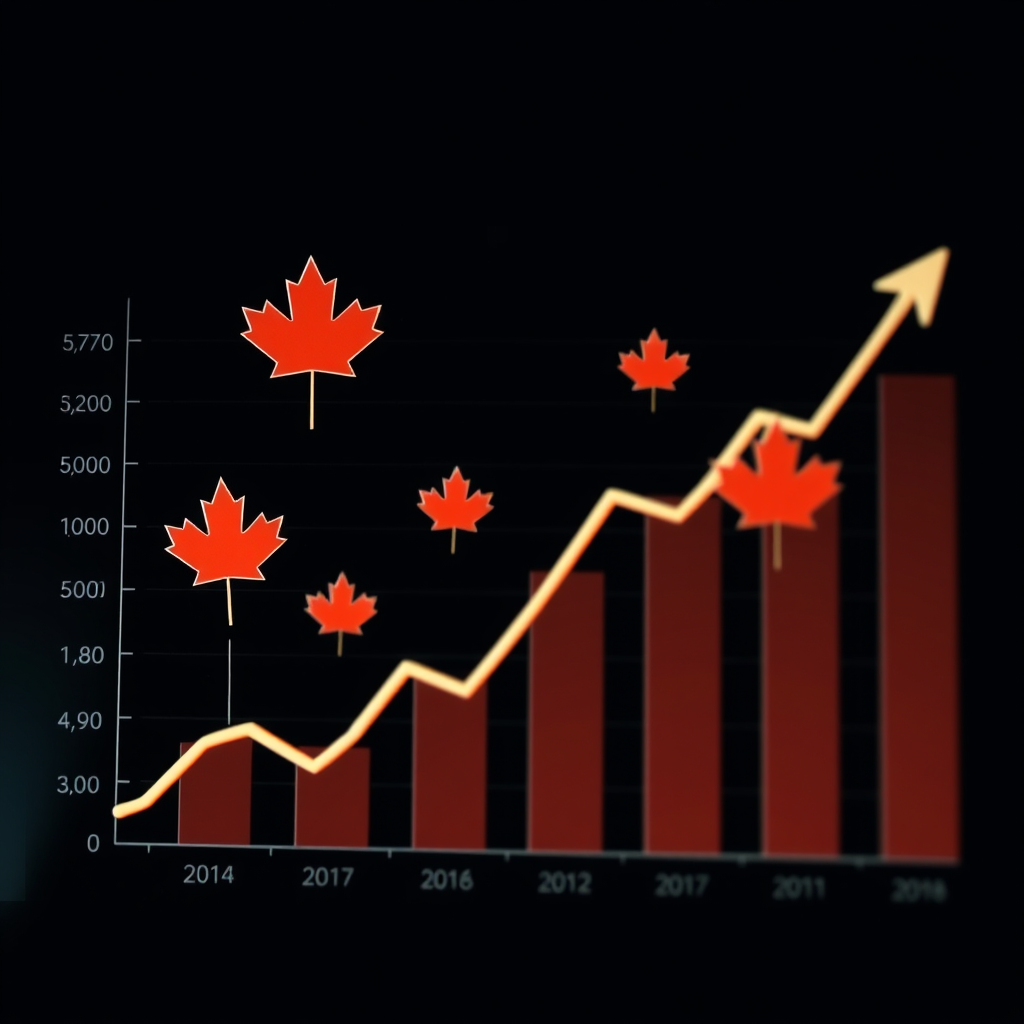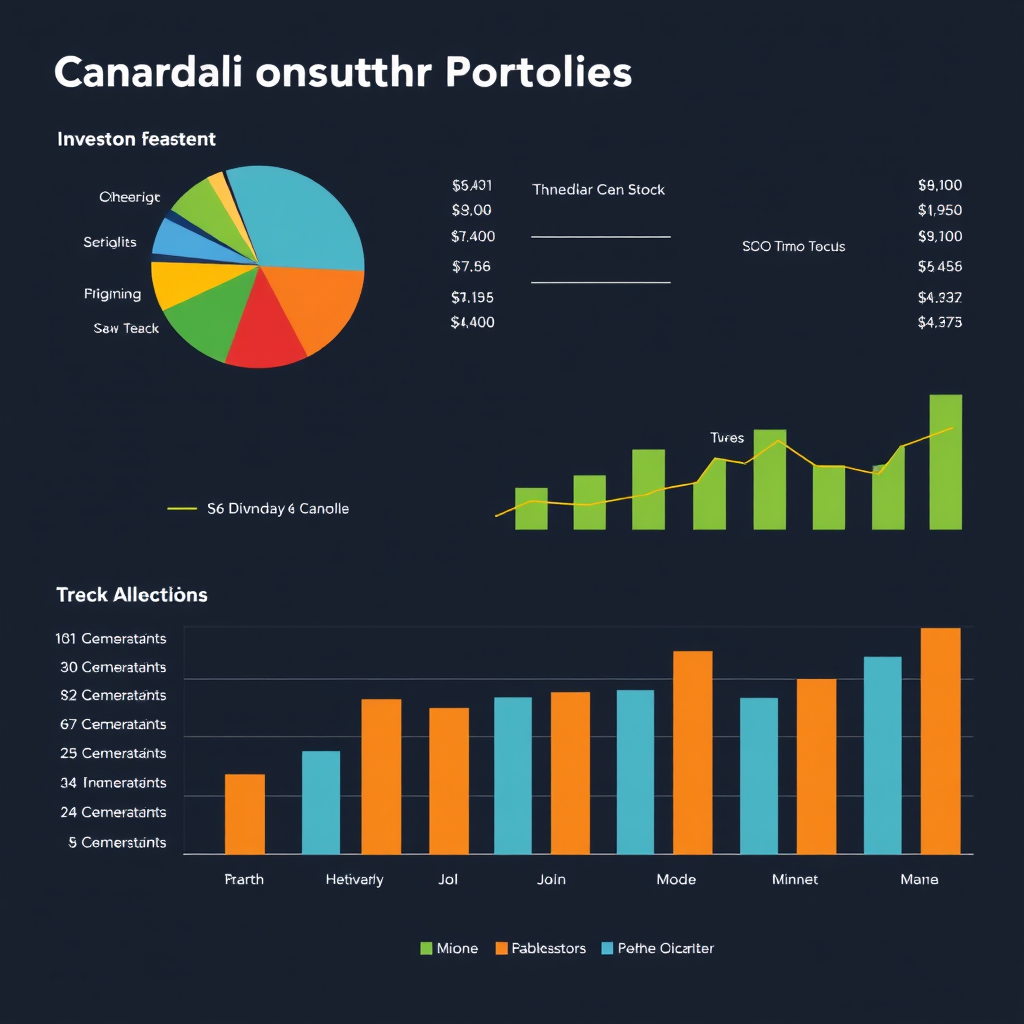Canadian Dividend Stocks to Watch: Building Passive Income in Uncertain Markets

In today's volatile market environment, Canadian dividend stocks continue to offer investors a reliable path to building passive income. With economic uncertainty persisting through 2024, dividend-paying companies provide both stability and growth potential for income-focused portfolios.
The Canadian market offers unique advantages for dividend investors, including favorable tax treatment through the dividend tax credit and a strong tradition of dividend-paying companies across key sectors. As we navigate through uncertain economic conditions, understanding which dividend stocks to watch becomes crucial for long-term wealth building.
Top Canadian Banking Dividend Champions

Canadian banks remain the cornerstone of dividend investing, with the Big Six banks offering some of the most reliable dividend payments in the market. These financial institutions have demonstrated remarkable resilience and continue to invest and earn substantial returns for shareholders.
Royal Bank of Canada (RBC)
RBC stands out with its diversified revenue streams and strong capital position. The bank's current dividend yield of approximately 4.2% is supported by robust earnings and a conservative payout ratio. RBC's wealth management and capital markets divisions provide additional stability during economic downturns.
Toronto-Dominion Bank (TD)
TD Bank offers investors exposure to both Canadian and U.S. markets, with significant operations across North America. The bank's focus on retail banking and strong digital presence position it well for future growth while maintaining a solid dividend yield of around 4.5%.
Bank of Nova Scotia (Scotiabank)
Scotiabank's international diversification, particularly in Latin America, provides unique growth opportunities. Despite some challenges in emerging markets, the bank maintains a competitive dividend yield and continues to invest in digital transformation initiatives.
Utility Stocks: Steady Income in Any Weather

Utility companies provide essential services that generate predictable cash flows, making them ideal for dividend-focused investors seeking stability. Canadian utilities benefit from regulated revenue models and growing demand for clean energy solutions.
Fortis Inc.
Fortis operates regulated utilities across Canada, the United States, and the Caribbean. The company has increased its dividend for 50 consecutive years, demonstrating exceptional commitment to shareholder returns. With a current yield of approximately 4.0%, Fortis continues to invest in infrastructure upgrades and renewable energy projects.
Canadian Utilities Limited
This Alberta-based utility company boasts one of the longest dividend growth streaks in Canadian history, with over 50 years of consecutive increases. The company's diversified operations in electricity, natural gas, and renewable energy provide multiple revenue streams and earn consistent returns for investors.
Hydro One Limited
As Ontario's largest electricity transmission and distribution provider, Hydro One benefits from regulated rate structures and essential service provision. The company's dividend yield of around 3.8% is supported by ongoing infrastructure investments and stable regulatory environment.
Real Estate Investment Trusts (REITs): Property-Based Passive Income

Canadian REITs offer investors direct exposure to real estate markets while providing attractive dividend yields. These investment vehicles are required to distribute most of their income to shareholders, making them natural dividend generators.
Canadian Apartment Properties REIT
CAP REIT focuses on residential rental properties across Canada, benefiting from strong rental demand and limited housing supply. The REIT's diversified portfolio and active asset management approach support a sustainable dividend yield of approximately 3.2%.
RioCan Real Estate Investment Trust
RioCan is Canada's largest retail-focused REIT, with a portfolio of shopping centers and mixed-use developments. The company's strategic focus on urban markets and residential development provides multiple avenues for growth while maintaining dividend distributions.
Brookfield Asset Management
While technically not a traditional REIT, Brookfield offers exposure to global real estate and infrastructure assets. The company's dividend yield and capital appreciation potential make it an attractive option for investors seeking diversified real estate exposure.
Dividend Sustainability Analysis
When evaluating dividend stocks, sustainability should be the primary concern for long-term investors. Key metrics to consider include payout ratios, cash flow coverage, and debt levels. Companies that can maintain and grow their dividends through various economic cycles provide the most value for income-focused portfolios.
Payout Ratio Considerations
A sustainable payout ratio typically ranges from 40% to 70% of earnings, allowing companies to retain sufficient capital for growth investments while rewarding shareholders. Banks and utilities often operate at higher payout ratios due to their stable business models, while growth-oriented companies may maintain lower ratios.
Cash Flow Coverage
cash flow coverage provides insight into a company's ability to fund dividend payments from operational activities. Companies with strong cash flow generation can better weather economic downturns and continue dividend payments even during challenging periods.
Portfolio Diversification Strategies

Building a well-diversified dividend portfolio requires careful sector allocation and risk management. Canadian investors should consider exposure across financial services, utilities, real estate, telecommunications, and consumer staples to minimize concentration risk.
Sector Allocation Guidelines
A balanced Canadian dividend portfolio might allocate 30-40% to financial services, 20-25% to utilities and infrastructure, 15-20% to REITs, and the remainder across telecommunications, consumer staples, and energy sectors. This allocation provides stability while capturing growth opportunities across different market segments.
Geographic Diversification
While focusing on Canadian dividend stocks, investors should consider companies with international operations to reduce domestic market concentration. Many Canadian banks, utilities, and resource companies have significant global exposure, providing natural diversification benefits.
Tax Considerations for Canadian Dividend Investors
Canadian dividend taxation offers significant advantages through the dividend tax credit system. Eligible dividends from Canadian corporations receive preferential tax treatment, making them more attractive than interest income or foreign dividends for taxable accounts.
The dividend tax credit effectively reduces the tax rate on eligible dividends, with the exact benefit varying by province and income level. High-income earners in particular benefit from this preferential treatment, making Canadian dividend stocks an efficient way to generate after-tax income.
RRSP and TFSA Strategies
Within registered accounts like RRSPs and TFSAs, dividend taxation becomes less relevant, allowing investors to focus purely on total return potential. However, the dividend tax credit is lost within these accounts, so investors should consider holding higher-yielding stocks in taxable accounts when possible.
Risk Management in Uncertain Markets
Market uncertainty requires careful risk management when building dividend portfolios. Interest rate changes, economic cycles, and sector-specific challenges can all impact dividend sustainability and stock valuations.
Interest Rate Sensitivity
Dividend stocks, particularly utilities and REITs, can be sensitive to interest rate changes. Rising rates may pressure valuations as investors demand higher yields, while falling rates can boost dividend stock prices. Understanding this relationship helps investors time their purchases and manage portfolio risk.
Economic Cycle Considerations
Different sectors perform differently throughout economic cycles. Banks may face challenges during recessions due to credit losses, while utilities and consumer staples tend to be more defensive. Balancing cyclical and defensive dividend stocks helps smooth portfolio returns over time.
Building Your Dividend Investment Strategy
Successful dividend investing requires a long-term perspective and disciplined approach. Start by determining your income needs and risk tolerance, then build a diversified portfolio of quality dividend-paying companies with sustainable business models.
Regular portfolio reviews and rebalancing ensure your dividend strategy remains aligned with your financial goals. Focus on companies with strong competitive positions, growing earnings, and management teams committed to returning capital to shareholders through consistent dividend payments.
Dollar-Cost Averaging Benefits
Implementing a dollar-cost averaging strategy can help smooth out market volatility and build positions in quality dividend stocks over time. This approach is particularly effective for dividend investing, as it allows investors to reinvest dividends and compound returns while reducing timing risk.
Looking Ahead: Future Opportunities
The Canadian dividend landscape continues to evolve, with new opportunities emerging in renewable energy, technology, and healthcare sectors. While traditional dividend sectors remain important, investors should also consider emerging dividend payers that may offer higher growth potential.
As we move through 2024 and beyond, Canadian dividend stocks remain an essential component of income-focused portfolios. By focusing on quality companies with sustainable business models and strong dividend policies, investors can build reliable passive income streams that grow over time.
The key to successful dividend investing lies in patience, diversification, and continuous learning. Stay informed about market developments, company fundamentals, and economic trends that may impact your dividend investments. With careful planning and execution, Canadian dividend stocks can provide the foundation for long-term financial success and passive income generation.